Meet the head greenkeeper (who also runs the entire golf club)
Rob Wiles is a bit different to most course managers: he’s also a director of the company that owns Cottingham Parks Golf Club and Leisure Club in Yorkshire, which makes him his boss’ boss. He talks about how this works, the equipment his team uses to maintain the course and why he is calling for equality in VAT legislation
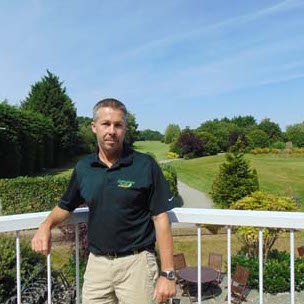
Cottingham Parks Golf Club and Leisure Club is a very modern venue – as well as the golf course it also offers a gym, lodges, a salon and even a riding school. What is different though is that the club’s head greenkeeper, Rob Wiles, is, as one of the directors of the company that owns the facility, also the boss of the general manager, when it’s usually the other way around.
We caught up with him to find out how this set-up works in practice, especially when it comes to managing budgets, and to see what technical approaches he takes to managing a popular Yorkshire course.
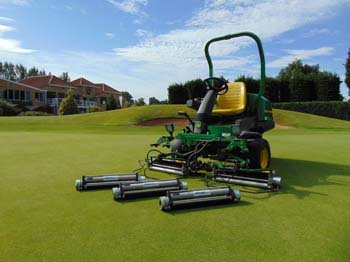
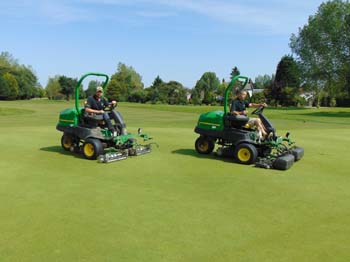
How do you allocate your time between the two roles?
Managing my time efficiently is probably one of the toughest parts of the job. Meeting the demands of running the business as a company director whilst retaining a hands-on approach to the course maintenance can be challenging and rewarding in equal measure. The business has grown considerably over the last 20 years and my role has had to change with it. We now operate two 18-hole golf courses, golf driving range, clubhouse catering and function facilities, health club, holiday lodge park, equestrian centre and still carry out a small amount of seasonal agricultural work baling straw for our biomass heating plant.
There is never a dull moment and I never seem to be able to dedicate enough time to any one task. My father still plays a key role in the business and I am lucky to have a great team of staff around to help me. Our head golf professional, Chris Gray, has been with the club since we opened in 1994 and now heads the general management of the club operations while Jon Edmond, who has also been with us since 1994, now heads up a team of ground staff that look after both of the courses.
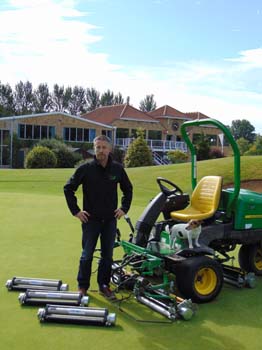
How do you plan your budgets?
Being in the fortunate position of owner and operator I can review budgets frequently to reflect the demands of the business. Like many clubs in recent years we have had to tighten our belts and work with a limited budget in most areas. However, 2016 was a better trading year for the club and we took the opportunity to renew several machines and get our groundcare equipment back up to date – taking advantage of a John Deere finance offer to spread the cost.
We’ve also invested a lot of time and money over the last 18 months, redesigning Skidby Lakes, our second course. We have constructed a new par three from tee to green, constructed four other new tees and changed the layout of the course in the process. This has improved the safety of the course and its playability through the winter months. This is definitely a one-off project which should, and one that needs to, pay for itself over the longer term.
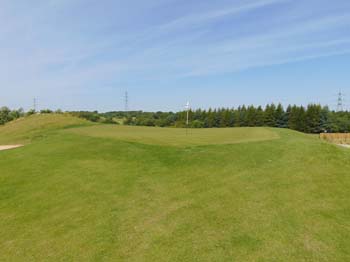
What do you do for member retention?
From a greenkeeping perspective I think consistency of how we present and maintain the course is important to the members. Equally a proactive approach to course improvement projects proves to the members we are reinvesting in the golf facilities at the club.
As a club, our team of golf professionals play a big part in membership retention and recruitment. They regularly host fun events for the members to create a good social buzz at the club. They’ve also been responsible for recruiting new members through their group coaching schemes and have just been recognised with a national award for their work with junior golf, in particular getting girls into golf.
We’ve recently introduced a new ‘Academy Membership’ category to attract new players into the game and it acts as an affordable way to join the club. This entitles them to play one round a month on either course with discounts available on extra rounds; the ability to submit cards for a handicap and play in some club competitions; 200 range balls per month; all of the benefits of the members’ discount card in the bar and clubhouse. This seems to be a very attractive proposition to those reluctant to commit to a full membership and a great feeder to full membership.
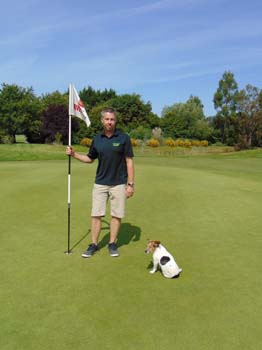
What changes do you think need to be made to benefit the industry?
I think golf in general has been struggling for a few years – the financial pressures some clubs have been facing has forced them to join the race to the bottom, seeing some clubs heavily discounting their green fees or adopting special two-for-one offers for casual golf. This in turn makes membership seem like a relatively expensive proposition. Even if you’re not in this sector of the market it makes membership retention ever more difficult and undermines the sustainability of golf in general.
However I think the biggest single change that would transform the profitability of proprietary clubs like ourselves would be equality in the VAT laws on membership income. Currently we pay VAT on all income at the club which puts us at a massive disadvantage to members’ clubs who are exempt from charging VAT on membership and have now found a way of making green fee income exempt as well.
Fundamentally we provide the same service and facilities to our customers with the inequality of different tax laws. If we had a level playing field we could reinvest in our businesses, reward our staff, offer value for money to our customers and improve the game of golf for all to enjoy.
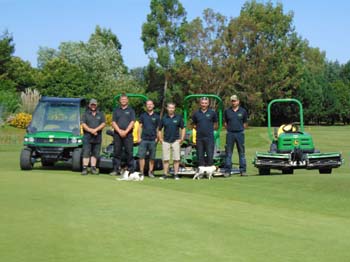
What aeration and topdressing programmes do you use?
We usually verti-drain the greens at both courses with 12mm tines to approximately 200mm in the spring and autumn. During the season we regularly solid tine the greens approximately 75mm deep.
We have recently purchased a tractor mounted SISIS Rotarake TM1000 which we used on 18 greens this spring. This removed thatch and created good linear aeration to a depth of approximately 30-35mm, giving a similar effect to a Graden. We combined this with topdressing and overseeding with great effect and hope to repeat this process again in the autumn on the other 18 greens.
We are currently using a 70:30 topdressing from Mansfield Sand and usually apply this at the beginning of May each year with further light dressings applied during the season if necessary. Normally we would drag mat and brush the dressing in but this year we used our new ATT TMSystem SMARTVibe cassettes and brushes for the first time. We had them fitted to our old greens’ mower and this made a real difference incorporating the dressing into the sward. By rolling again the next day we we’re able to skip a day with the greens mower and avoided picking up the dressing and damaging the mower heads.
What attracted you to the cassettes?
We’d been looking at different cassette systems and vibe rollers and took particular interest in what was available at the BTME show in Harrogate this year. I spoke with the guys from ATT and their system seemed very well engineered. The big selling point for us being the wide choice of cassettes including the roller system and even a complete mower cylinder and bottom blade that fits into the same carrier frame.
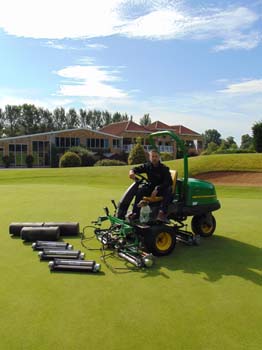
What criteria are you using to select machinery?
We run a large fleet of machines and I try to write off the cost our equipment over a five to 10 year period. For us, value for money and reliability are key factors to consider when buying new equipment, but dealer service and back up are equally important. Front line machines such as greens’ mowers, tees’ mowers and fairway mowers take priority over other equipment for renewal and replacement. Like anyone else we have a long wishlist of new equipment we would like to add to our fleet but this has to be reviewed annually, decided by the specific needs of the course and budgets.
What cultivars are you using?
Our greens are predominantly bent fescue mix with the inevitable addition of some poa. We have been using Rigby Taylor’s R1 mix for overseeding and greens’ renovation in the past but we have recently experimented with combining this with their R9 ultra-fine rye mix and had great results with fast establishment on the greens without compromising the playing surface.
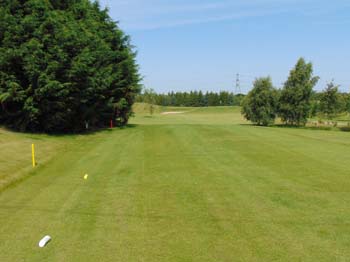
What do you consider to be the greatest challenges you face?
Managing the unrealistic expectations of the members! Seriously though, my biggest challenge is balancing the budgets for staffing costs. The recent increases in the minimum / living wage have forced our wage bill up across all departments, including the grounds’ staff, and finding new income to pay for this isn’t easy.




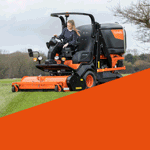










Great article.. This is what matters in golf, as opposed to the article regarding doubling Affiliation Fees in another recent post.
Rob has pretty much summed up what I know are the thoughts of many Proprietary Clubs & Managers across the Country. The difficulty of producing a good test of golf, balancing of budgets & dealing with unrealistic expectations against a backdrop of extremely unfair VAT legislation. It is Clubs like these that will be the best at “growing the game” of golf if they are given half a chance.
Good Luck Rob Wiles and everyone at Cottingham Parks!
Very much enjoyed reading that insight into the management and operation of my club. Really informative and interesting.